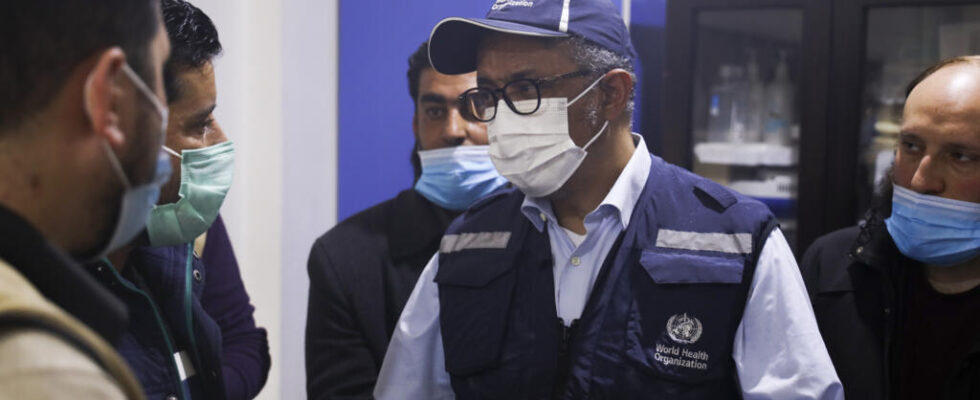This is a consequence of the double deadly earthquake last month: the head of the World Health Organization, Tedros Adhanom Ghebreyesus, visited this Wednesday, March 1 in northwestern Syria. In twelve years of war, he is the highest United Nations official (WHO depends on the UN) to have visited this region held by rebel and jihadist organizations.
“ The people of northwestern Syria need help from the international community. This is the appeal launched by the leader of the World Health Organization during this visit to rebel Syrian territory.
Doctor Tedros Adhanom Ghebreyesus recalled that the earthquakes of February 6 had ravaged an area that had already suffered; suffered from ” economic collapse, war, the Covid-19 pandemic and then a cholera epidemic “.
The 12-year conflict in #Syria caused enormous damage to the health system. The earthquakes stretched it further. Today @DrTedros entered north-west Syria and met health workers and communities to address their health needs. pic.twitter.com/57vag4CQdQ
— World Health Organization (WHO) (@WHO) March 1, 2023
More than four million people live in the northwestern regions of Syria, which are beyond the control of Bashar al-Assad’s regime. Half of these civilians are Syrians who have had to flee their homes, driven out by the war.
The vast majority of this population depends on external humanitarian support, channeled through Turkish territory. And during his visit on Wednesday, the number one of the WHO stressed that the needs were increasing even before the earthquakes, while international aid was decreasing.
The earthquakes therefore aggravated an already critical situation. In this region bordering Turkey, there are more than 4,500 victims of the earthquake, out of a total of around 6,000 on the Syrian side.
► See also Syria: after the earthquake, a more popular Bashar al-Assad?
